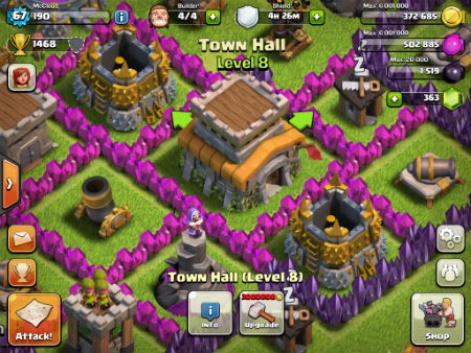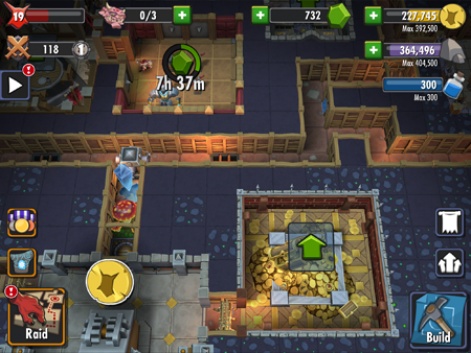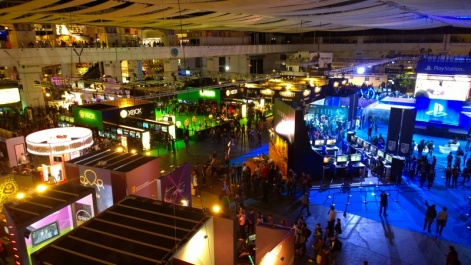User acquisition remains one of the biggest problems facing any game developer and the problem is apparently getting worse.
In a recent report, Fiksu that the cost of acquiring a Loyal User (i.e. one who returns to your game three times) was $1.97 in July, a 9% increase year-on-year and the second highest in four years, the highest being $2.23 in June.
Add to that the market dominance of the big players and their apparent ability to spend their way to control of the app store charts and it's a clearly intimidating picture.
Silver linings
But if we look at this picture differently there are still opportunities to succeed if we don't give into despair.
These top games aren't just masters of spending money. They are carefully designed and rewarding experiences which easily convert and retain users.
They understand the lifecycle of their players and have the ability to adapt their design to perfectly suit either a mass-market (in the case of Candy Crush) or the passion of a niche (arguable a super-niche) audience as in the case of Clash of Clans.

They put retention first which is a testament to why we are still talking about them more than two years after both games' release; and that's why they can afford to invest so much more than other developers.
But it's only the rare game that can pull this trick off and, to an extent, a side effect of Apple and Google's retail strategy that they have been able to dominate so effectively.
However, games like The Room and Monument Valley - even Flappy Birds or Timberman - have shown there are get breakthrough games that don't spending a lot of advertising money.
So why hasn't it worked for your game?
How wider is your reach?
Ok, some of this about luck, or perhaps more accurately about hitting the right timing.
That effect of getting the zeitgeist seems almost entirely random, but it doesn't happen if you don't make sure you game has some essential quality that activates the players' imagination.
But more than that reach is also critical. If we don't get the idea of our game distributed as widely as possible your chances of converting them to download or play, let alone become 'loyal users' will be greatly diminished.
Brands aren't built on advertising alone. They are built by passion and engagement.Oscar Clark
Advertising is a tried-and-tested method and in games the frictionless journey between ad and install is hugely effective. Even with the success of in-game ads there is ongoing innovation in terms of the presentation of interstitials, context sensitive incentives and of course the use of video including our own UnityAds.
But there are other means. Some games are looking to establish themselves on other platforms, such as Steam where the competition isn't (currently) so severe.
However, bringing that audience over to mobile or tablet has been somewhat hit-and-miss. We need to really take brand building seriously if we are going to be able to pull off engaging players on multiple platforms; and I think that means building a relationship with our community.
Face-to-face
There are shortcuts of course. By taking on an established brand you can hope to bring the existing audience and brand values with you.
But you had better be true to that brand or if can become counter-productive and (like EA's recent reboot for Dungeon Keeper) actually end up damaging the perception of the original.
Brands aren't built on advertising alone. They are built by passion and engagement.
We always should be reaching out to our audience wherever they are. I remember back in the day running a Bridge service on Wireplay, so we reached out to the English Bridge Union who became sponsors and provided not only people to staff the service, they also provided lessons in playing the game to me and my team - giving us a way to talk the same language.

If your game has an existing community, even if in another form, then find ways to find them and to make their experience more accessible through your service.
There is something powerful that happens when your potential players get to meet you in person. Look at the Indie Mega Booth at Gamescom 2014 in Cologne. It was stacked full of indie gaming talent showing off their latest creations.
Over the week and weekend that is Gamescom, they must have talked to hundreds if not thousands of players as well as some of the most influential people in the industry. That's potent stuff. Not just because of the specific individuals, but of who they may influence and how they will affect people they know. It creates a halo effect.
Something powerful happens when your potential players get to meet you in person.Oscar Clark
Obviously, through Everyplay and our recent announcements at Unite in Seattle show that we understand how important it is to use the social media tools and personal experiences to support games communities.
But let's not forget that there are real-world experiences and passionate audiences out there we can reach out to.
Or look at the recent EGX London. This wasn't just about showing off the latest console games, there were live Twitch streaming, boardgames from Esdevium games, eSports, as well as an amazing selection of the best upcoming indie games.
But even with events like Gamescom and EGX, what level of influence can these really have on the mass-market gaming audience. What about events like Pax Prime (which sold out with over 85,000 attendees) and MCM Comicon in London which itself had over 100,000 attending this May?
Indies are winning
I found it fascinating that in a satisfaction survey for the London event they found that indie game developers scored highest! Beating all other attractions at the event!
With new shows coming up for London (October 24-26) and Birmingham (November 22-23) it seems to me that this will be an amazing opportunity for developers to show their wares in front of thousands of potentially fanatical advocates.
The problem comes when we try measuring the influence of these local experiences on the success of your game which is being sold to a global audience. These generally fail to make any measurable change to your downloads; unless your level of install is already pretty tiny.

Does this mean that they aren't worth doing? The trouble is these event contribute to our long term engagement with our audience and they need to be a part of the other forms of engagement from social media to advertising and even in the game design itself.
There are of course other advantages to getting in front of players. We gain an invaluable opportunity for feedback and to build emotional engagement with the players; the kind of thing which builds real advocates.
Mobile and tablet games have the most frictionless acquisition process possible, but we also have effectively infinite supply.
We need to use all of the tools available as consistently as possible to communicate to our audience through the game, using social experiences like Everyplay, and perhaps at consumer events like PAX or MCM Comicon too.
Oscar Clark is a consultant and evangelist for Everyplay, the free SDK that records and shares your favourite moments of play. Everyplay was acquired by Unity Technologies in March 2014.
Find out more at developer.everyplay.com
He is also author of "Games As A Service: How Free To Play Design Can Make Better Games" published by Focal Press is now available on Amazon as well as Kindle, iBooks and Kobo.
To follow Oscar on Twitter, check out @Athanateus





















